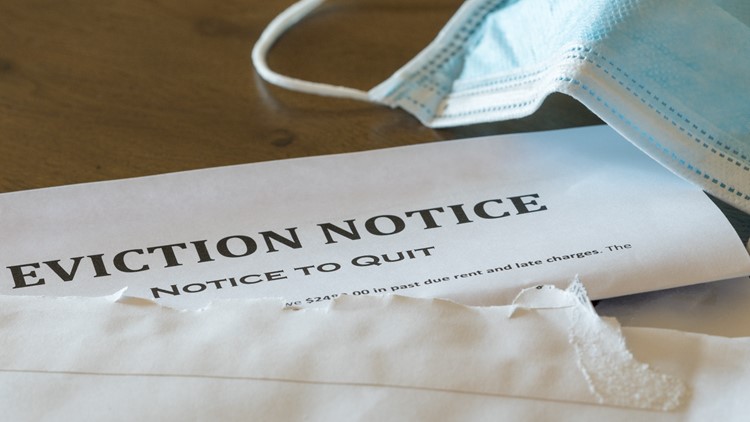PIERCE COUNTY, Wash. — Before the COVID-19 eviction moratorium expired last fall, Pierce County had more people facing eviction than anywhere else in the state. Many were anticipating a surge of evictions to hit the county and other areas of Washington.
“It was a big question mark back then because everyone was predicting this tsunami, this so-called tidal wave of evictions,” said Mark Morzol, the managing attorney for the Housing Justice Project with Tacomaprobono Community Lawyers.
The organization is the sole provider of right-to-counsel services for Pierce County. They represent all low-income tenants in the county going through eviction proceedings.
“Back then the key question was, what impact is rental assistance going to have on this entire situation?” said Morzol.
A few months later, however, evictions are lower in the county than in an average, pre-pandemic year. Data suggest the rental assistance program held back the eviction wave for now.
Pre-pandemic, Pierce County would see 3,200 to 3,500 evictions in an average year, which equates to around 265 to 295 a month.
Following the expiration of the eviction moratorium, there were 108 evictions in December, 140 evictions in January, 115 evictions in February and 160 evictions in March.
“I think in Pierce County, I think throughout Washington state... [rental assistance] has been a hugely successful program at keeping people out of the eviction process and out of the court,” said Morzol.
Of the evictions referred for resolution, about 90% of them were for nonpayment, according to county data. Approximately 15,000 households have been served through the rental assistance program so far, with an average of $10,500 given to each household. In total, the county has spent $107 million in funds.
“If you were to take [rental assistance] out of the equation, we would have had the tidal wave. We would have had the tsunami,” said Morzol. “That’s a significant amount of nonpayment cases that did not come through.”
Pierce County’s historically high eviction rate
Pierce County is still seeing the highest number of evictions in Washington state, which is in line with a historically high eviction rate in the region.
King County has had fewer evictions in the months following the expiration of the statewide moratorium, despite being the biggest county in the state. There were 69 evictions in December of 2021, 108 evictions in January of this year, 103 evictions in February and 124 evictions in March, according to data from the King County Bar Association.
Morzol cited extra protections cities have enacted within King County that kept the overall number of evictions lower than in Pierce County. Seattle’s eviction moratorium expired on February 28, and tenants have added protections in the city that can help them in eviction proceedings. Other cities, like Burien and Kenmore, also enacted eviction moratoriums of their own that may have helped to keep the overall number of evictions low.
Even before the pandemic, renters had a higher risk of eviction in Pierce County than anywhere else in Washington by 56%.
Compounding economic pressures already facing renters, Pierce County also saw the biggest jump in unemployment between 2019 and 2020 in Washington state, even ranking No. 38 in the nation for rising unemployment rates in that time, according to data from UC Berkley’s Urban Displacement Project.
The economic pressures are even more pressing on BIPOC households, who, on average, are making less than the median income, according to the project’s findings.
Of Pierce County rental assistance applications, a disproportionate number were submitted by Black renters, who made up over a quarter of applications but represent just 7% of Pierce County's population. Around 9% of applications were submitted by people who identify as Native Hawaiian or Pacific Islander, although estimates suggest that group makes up just over 1% of Pierce County's total population.
The future of rental assistance
In Pierce County, rental assistance applications are still steadily flowing into the Community Services Department, according to Community Services Manager John Barbee. To date, the county has spent about 77% of its funding and is still accepting applications.
“We estimate that we’re going to serve about 4,200 more households with the dollars that we currently have,” said Barbee.
“I think we still recognize that, yes, we’ve spent almost $110 million, and we still know there’s a need, so we’re still doing the best we can to exhaust all funds and avenues to continue to serve the residents of Pierce County,” he said.
Although federal COVID-19 money isn't expected to be replenished after the current round of funding is exhausted, rental assistance in some form is here to stay.
Current funds are expected to last the county through the summer and into the fall. After that, Community Services will transition into operating a smaller but longer-term rental assistance program, which Pierce County aims to have running by Jan. 1, 2023.
Currently, tenants must declare they’ve been impacted by COVID-19 to qualify for rental assistance. In the future, that will no longer be a requirement.
“One of the things is we definitely know that there is still a great need for assistance and ongoing support for our residents in Pierce County," said Barbee. "So what we’re looking at is changing our program guidelines."
The money comes from HB 1277, which passed through the state Legislature last year. The bill adds an additional $100 surcharge on all documents recorded by a county auditor. The funds will go toward affordable housing, rental assistance, shelter space and managing the state’s homeless programs.
“As long as we continue to have that funding source, we will continue to have that program,” said Barbee.
What will happen between the time rental assistance funds run out and the new program is operational is unknown.
“Now the second big question comes to us, and that question is going to be, what happens when rental assistance runs out? It’s a finite amount of resources, there’s still money available in Pierce County, but we’re going to come to a point where that money has been expended,” said Morzol. “If those households aren’t stabilized at this point, then it’s anybody’s guess what’s going to happen.”
Eligibility guidelines for future rental assistance have not been established by the Department of Commerce at this time, according to Barbee. However, as soon as they’re available the county plans to start work on setting up the new program.



